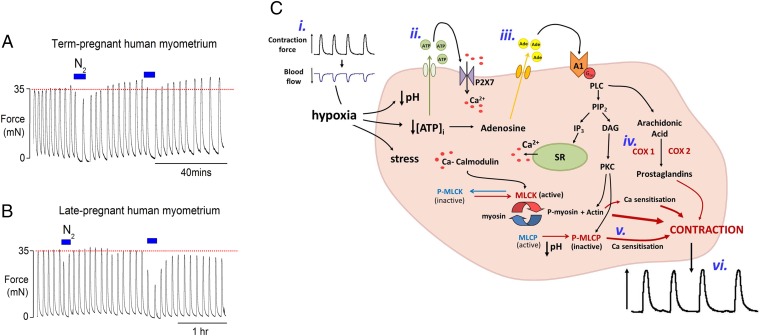Fig. 4.
The effect of repeated episodes of hypoxia on human myometrium and the possible mechanism of HIFI. Application of repeated brief hypoxia on (A) term-pregnant laboring human myometrium and (B) pregnant human myometrium earlier in gestation (around 38 wk). Note the rebound increase in force amplitude with normoxia in myometrium at term. (C) Scheme to show mechanisms leading to increased contraction following hypoxic episodes. (i) Contractions occlude uterine blood vessels, producing hypoxia, which results in oxidative stress, decreased pH and [ATP]. (ii) ATP effluxes from the myocyte and stimulates purinergic receptors, particularly P2X7, maintaining intracellular [Ca]. (iii) ATP hydrolysis leads to increased adenosine which stimulates its receptors, especially A1 type. (iv) The ensuing signaling cascade leads to PKC production as well as prostaglandin production and (v) inhibition of myosin light-chain phosphatase via phosphorylation (P-MLCP) and Ca sensitization of the myofilaments. This, in addition to other Ca sensitization mechanisms, including actin-mediated pathways, leads to increased force (vi). COX, cyclo-oxygenases; DAG, diacyl glycerol; IP3, inositol-Tris-phosphate; PIP2, phosphoinositide-bisphosphate; PLC, phopspholipase C; SR, sarcoplasmic reticulum.

